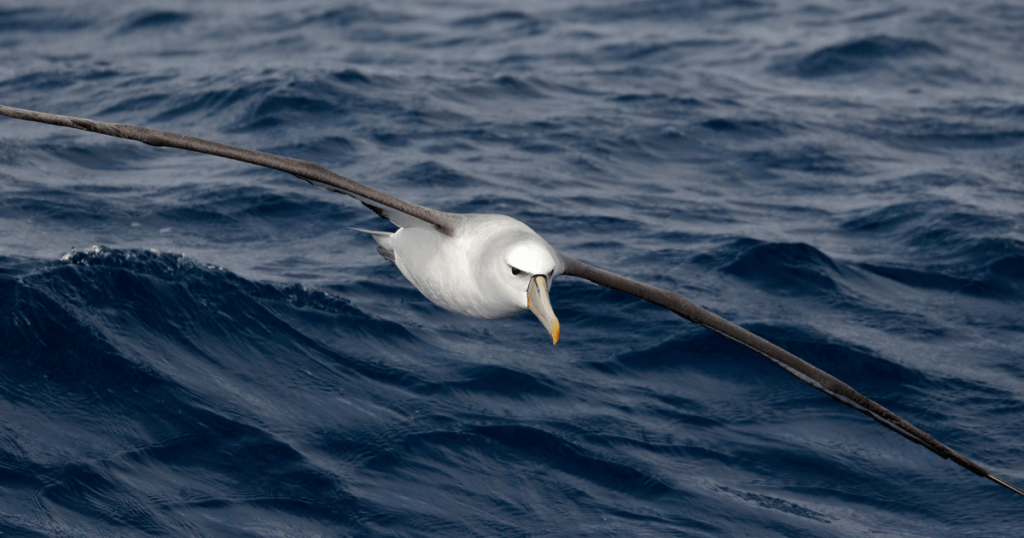
Ten years before he wrote Moby-Dick, Herman Melville was a young crewmember on a whaling ship when he saw an albatross during a South Pacific gale. “Long I gazed at that prodigy of plumage,” he later noted. In his new book, the English naturalist Adam Nicolson studies 10 seabirds ranging across the seven seas, showing that he too is enthralled by the sight of plumage. With scientific rigor and a poet’s sense of wonder, he uncovers the lives of puffins and kittiwakes, fulmars and gulls, all the while investigating the impact of climate change on these seabirds. In this excerpt, Nicolson expands on Melville’s experience with his own musings about the great white albatross.
The creature that had arrived in front of Melville as if from another universe, stripped of any associations with any life he knew, must have been the biggest of them all, a wandering albatross, whose wingspan is 11 feet or more, and of which the males begin their lives pied and spotted, but which, as they age, grow paler with every passing decade until they die as pure, unearthly and archangel-white as the bird Melville saw, maybe seventy or eighty years old, having fathered forty or fifty offspring and flown millions of miles across the Southern Ocean.
That otherworldliness is what we all see in them now. I have stood and watched for hours at the stern of a supply ship as it made its way across the Southern Ocean from South Georgia to Port Stanley in the Falklands. Wrapped in every piece of clothing I had, I always chose the lowest deck so that now and then, as the stern dropped into a trough, the bright, lit water came aboard, across the red-painted steel of the deck and over my boots so that I had to hang for a moment from the stanchions until we rose again on the swell and the wide, windstrewn landscape of that ocean reappeared, a storm-world stretched from one horizon to the other. Beside, behind and above us, along with the beautiful chequered cape petrels, domino birds, patterned like flying fragments of a draughtsboard, the albatrosses hung and floated for hours and days. They sailed beside us without effort, gliding across the swells as if all directions were equally possible, alive on an ocean of potentiality, alert on their seamless ice-surface of ease and command.
From the book The Seabird’s Cry by Adam Nicolson. Copyright © 2018 by Adam Nicolson. Reprinted by permission of Henry Holt and Company.

